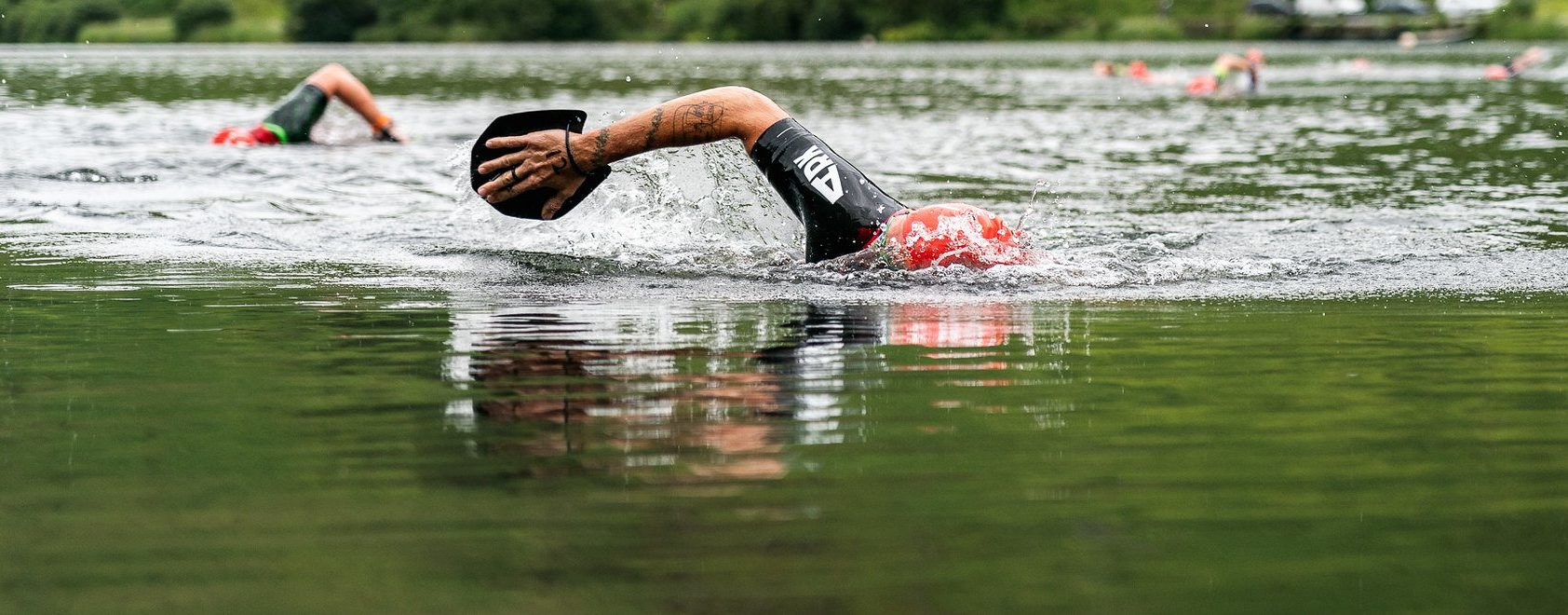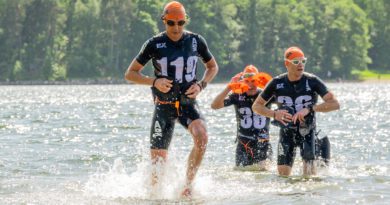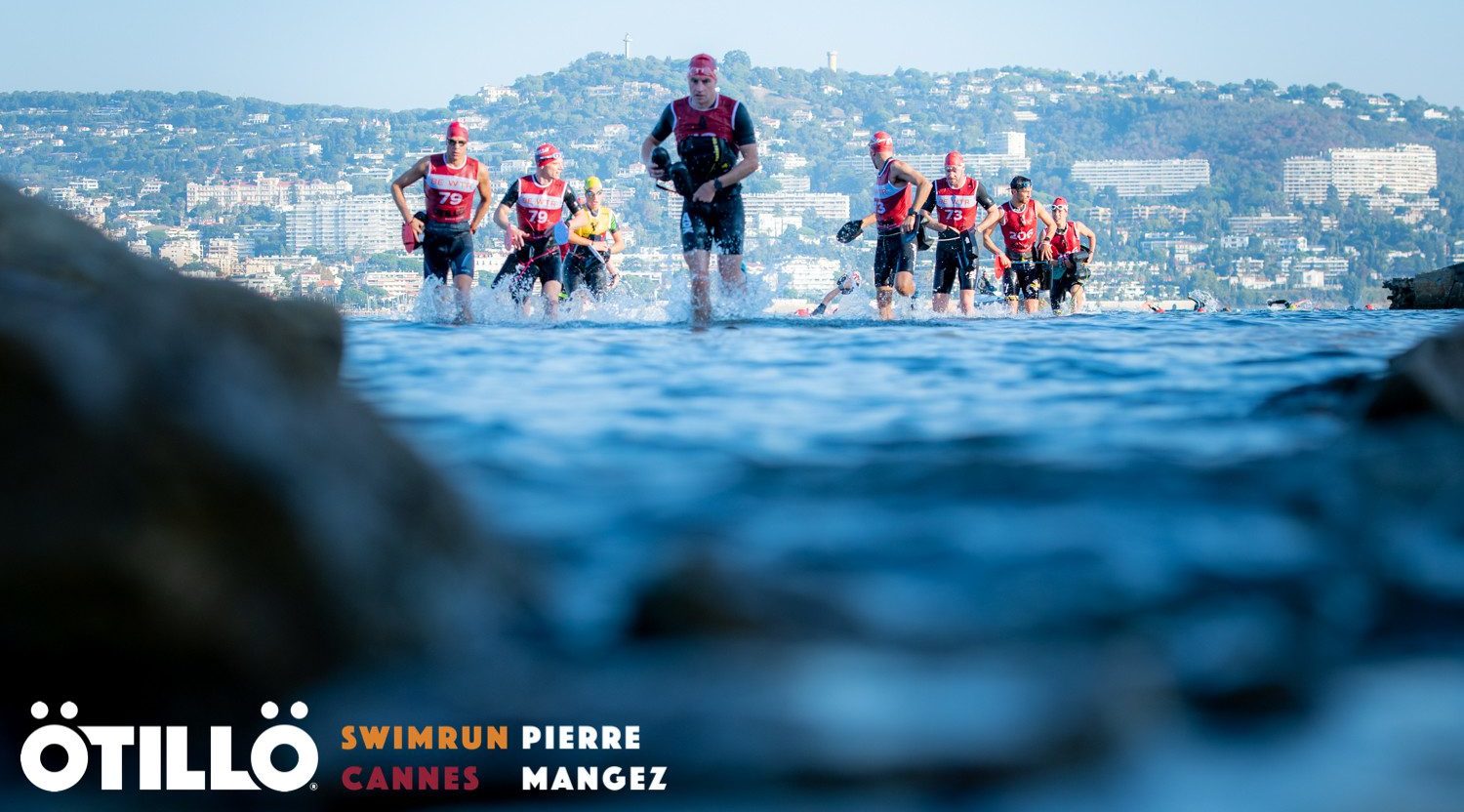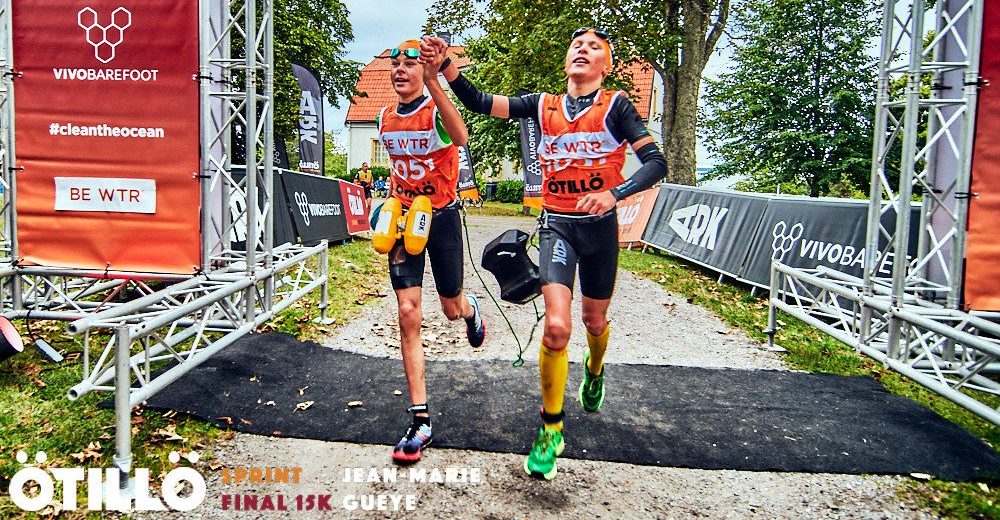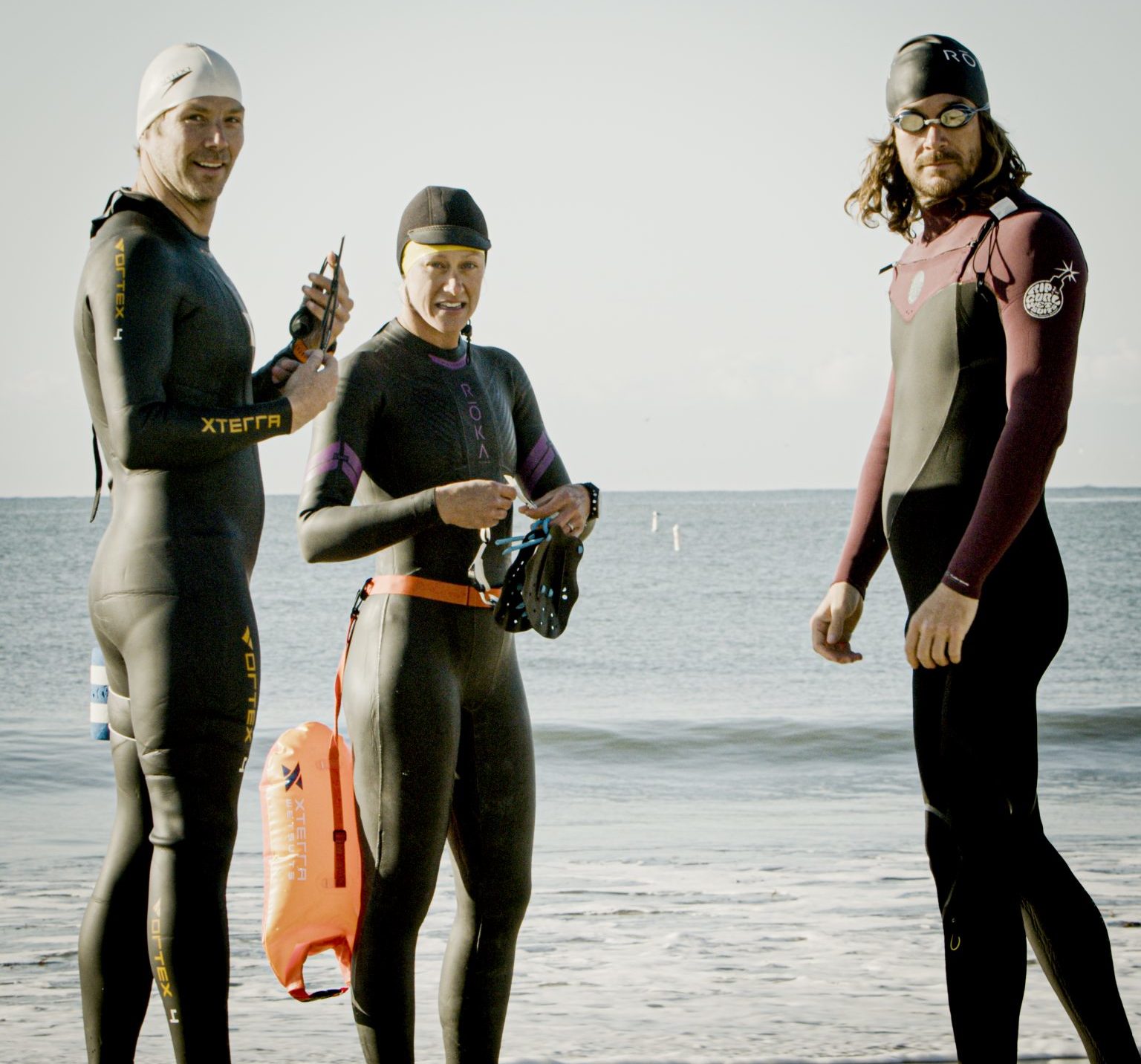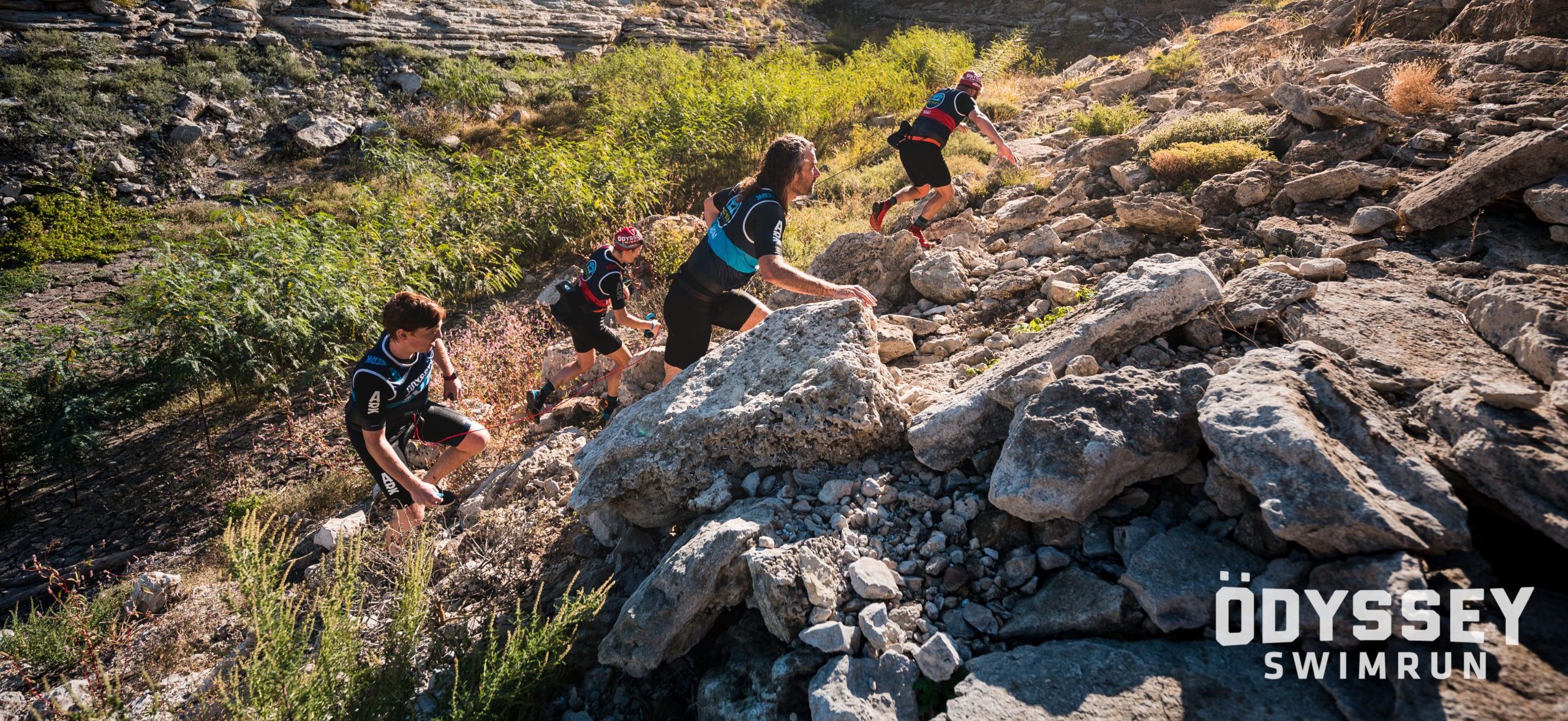Do I Really Have To Use Swimrun Hand Paddles?
Experienced swimmer, Alex Sheen talks about his journey into using hand paddles for swimrun.
Some of the most common questions I get asked by people who have watched a swimrun video relate to hand paddles! Ranging from “what are those ruddy great things on your hands?”, to “do I really have to wear them?”, as well as a myriad of queries about size, hand paddles continue to be a source of mystery and confusion for spectators and those new to the sport. In this article I hope to dispel a few myths and share some of my own advice on hand paddles and how they can help your swimrun game.


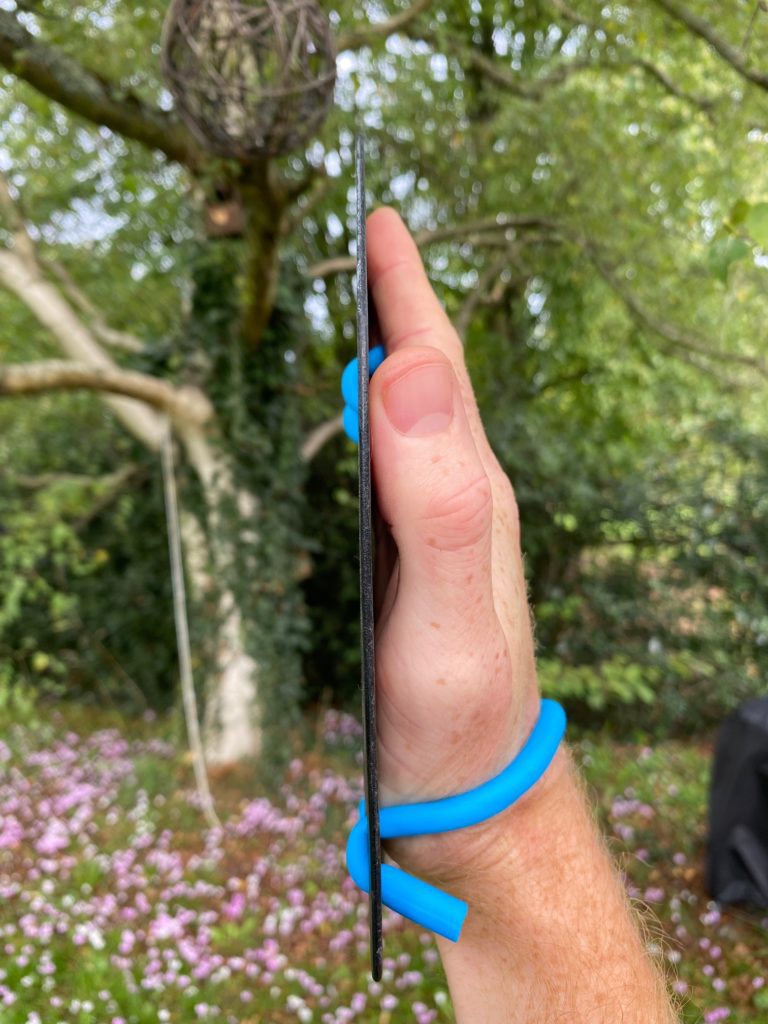
What are hand paddles?
As you’ve probably now clocked, the plastic (or carbon fibre, more on that later…) “things” often seen on the hands of swimrunners are hand paddles. Comprised of a flat, or slightly curved panel with straps to hold them in place, hand paddles are worn on the palm of the hand increasing the
resistance of hand movements into and through the water. Hand paddles may be familiar to those from a swimming background although for most swimmers, they are more often used as a technique training aid than anything else.

Hand paddles provide immediate feedback to swimmers on hand entry technique, if the hand entry does not sufficiently cut into the water, the flat face of the paddle will expose this to the swimmer (and no doubt grumpy coach…) as the hand struggles to enter the water. If you struggle with smooth hand entry, paddles can be a great tool to help!
Adding Power Into Your Stroke
Moving from hand entry to the catch and pull, the hand paddle provides additional resistance in the water, “biting” the water more than a hand. This allows for a single arm rotation to impart more power and deliver a more powerful stroke, much like wearing fins. Swimmers have traditionally used this to build strength, as while each stroke is more powerful, the added resistance works shoulders much harder.
Swimrun hand paddles tend to run much, much larger than typical pool training paddles as they are designed to impart the maximum power on each stroke, rather than simply work as a training aid.

Do you have to wear hand paddles for a swimrun race?
No! One of the best things about swimrun is how relaxed it is. Generally, apart from some mandatory safety equipment and the necessity that everything you start with, you finish with, everything goes.
Swimrunners usually wear hand paddles to help overcome the drag created by
wearing trainers through a more powerful stroke, and to make more use of their arms during the swims, and thus “save the legs” for running sections. Many swimrunners do not wear hand paddles, without any material impact on their race, but to be competitive it is something of a must. Ultimately, I’d encourage you to consider whether hand paddles will help your enjoyment of the event.

Getting started with hand paddles
Hand paddles bring with them a risk of increased injury due to the considerable strain they place on the shoulders and arm muscles. They must be introduced slowly and methodically, certainly not used on race day for the first time! I began by using my hand paddles whenever we were doing pull drills at swimming club training and gradually used them more and more to the extent that I now do one club session a week with them (usually a distance session), and the other without.
A favourite session is something like 6x400m with paddles, pull buoy and drag shorts. I also do all my swimrun practices with them. If you have concerns about your technique, or you start to experience discomfort, stop, and seek the advice of a swimming coach, you will spoil your season pretty fast with a shoulder injury.

I love using hand paddles now, but it’s taken about 6 months to get really
comfortable using them, even as a strong swimmer with a background in club swimming. I’d also really encourage you to think about the environment you’ll be using paddles in. The pool, a lake, and the sea are all very different environments for training and competing, so ensure you’re ready for the type of water in your race, the chop of the sea presents quite a challenge!
What size of hand paddles should I use?
This is a bit of a how long is a piece of string question, but first and foremost, start small. I started with a pair that were about the size of my hands, so they didn’t do much more than ensure that my technique was right, and I began to feel the extra power required to use them effectively.
Again, I cannot stress enough the importance of not going too big too quickly. If you’re unsure if your technique is ready for paddles yet, don’t be afraid to try one of the Finis strapless paddles. As you get comfortable with something hand sized, you can begin to think about sizing up.
The thing I’ve not seen covered much in hand paddle articles to date is stroke rate. Much like in running, in swimming we can think about our arm turnover, often measured as strokes per minute (or strokes per length but this is less useful for open water!). Adding hand paddles will almost certainly reduce our cadence, the added resistance will slow our arm rotations, but deliver more power with each stroke. The question therefore is, will the increase in stroke power, at the expense of a slower cadence, make us faster?

A further consideration is that open water swimming tends to require a higher arm turnover required to maintain momentum due to the lack of regular wall push offs, and environmental factors. SWOLF is the metric usually used for efficiency and if you could create a good enough test environment this would allow a true comparison, but this is hard for the amateur athlete to do well! Thus, the size of paddle question of should really be determined by a combination of factors around your strength and arm turnover.
Swimming Faster With Less Effort
I did recently collect some data (inadvertently I might add) in swim training that provided a useful comparison.
The main set in one session involved max effort 100m sprints (no kit) with active recovery of 250m between them repeated several times. The next day’s session had 6 x 100m pull at a high tempo pace, I did these with my pull buoy and hand paddles. Comparing the pace and other metrics, the pull/paddle 100s maintained the same pace as the max effort 100s despite a lower rate of perceived effort (I could actually speak after them…). With paddles my stroke rate reduced by 2-3 per 25m, and SWOLF was slightly improved. This was a good confirmation that my paddles are the right size for me, I can swim fast with less effort.
A final consideration for paddle size is the environment. In a smaller inland body of water, there tends not to be much chop, but on larger lakes and the sea, the waves add an extra dimension to paddle use. The extra width of paddles creates the risk of catching an edge as your arm comes over, something there is a much greater risk of in choppy water. This is disastrous for your forward momentum something you don’t want to lose in open water! If I were looking at a swim in some choppier conditions, I’d consider whether a smaller paddle might handle better.
Note to club swimmers: Training for short sprint distances for Open Meets is definitely affected by extensive hand paddle use. Regularly swimming with paddles has slowed my arm turnover and it took a lot of focus in a recent Open Meet to really sprint over short distances and not drop into the“efficient” turnover zone. If you are trying to train for both, get plenty of “competition” swimming practice too.
What type of hand paddle straps should I look for?
There are a few different types of strap available on hand paddles.
My first pair, had a small strap for my long finger to run through, and two longer straps either side for the rest of my fingers. This design gives a great secure fit as the paddle very much follows the shape and motion of your hand, and indeed the paddles are often slightly curved to fit into your palm. If your hand entry isn’t correct, these paddles give you the necessary feedback but won’t through your stroke off much so they’re good to get practicing with, but they are not quick to get on and off.

Threading your finger into the long strap is tricky and it’s easy to damage he rubber. If you need to get a hand out to press watch buttons, clamber over technical terrain you need to remove the whole paddle and stash it somewhere as it’s either on or off.
My current pair have a loop for a finger in the middle of the paddle, and a strap across the back of the wrist. This is not as secure a fit and requires more focus to swim with them as the wrist strap really only keeps them on your person, all of the paddle movement comes from the finger strap and the flat of your hand against the paddle itself.

However, the big advantage of this design is it’s possible to quickly slip your finger out and wear the paddles loosely around your wrists, or remove them entirely. I tend to take my finger out, but not my wrist, and then loosely clutch the paddle or flip it around while running. Personally, I prefer this type of strap, its easier on and off, more comfortable to run with, and still good in the water.
For more on swimrun hand paddles, an article here for the best swimrun paddles.

